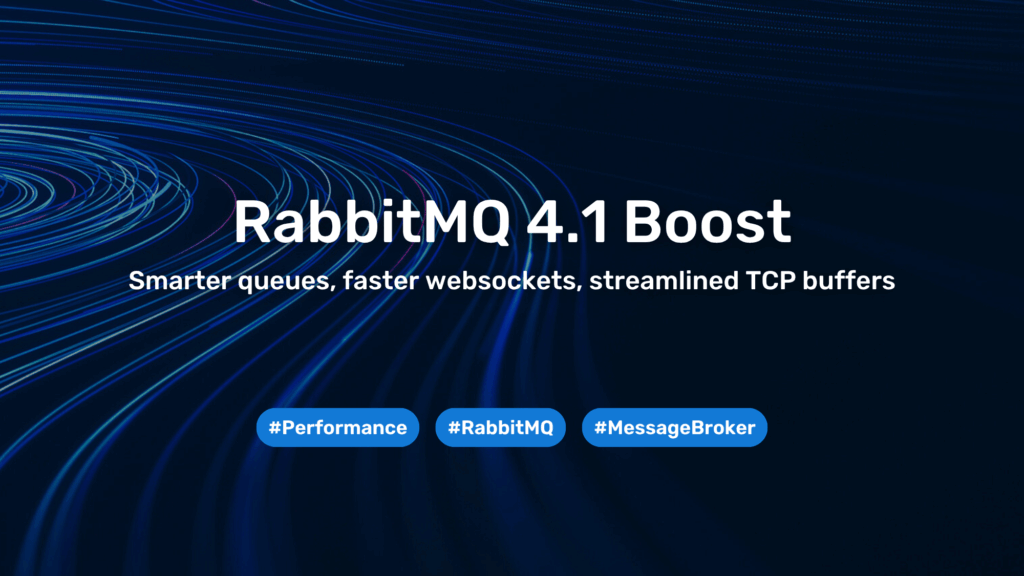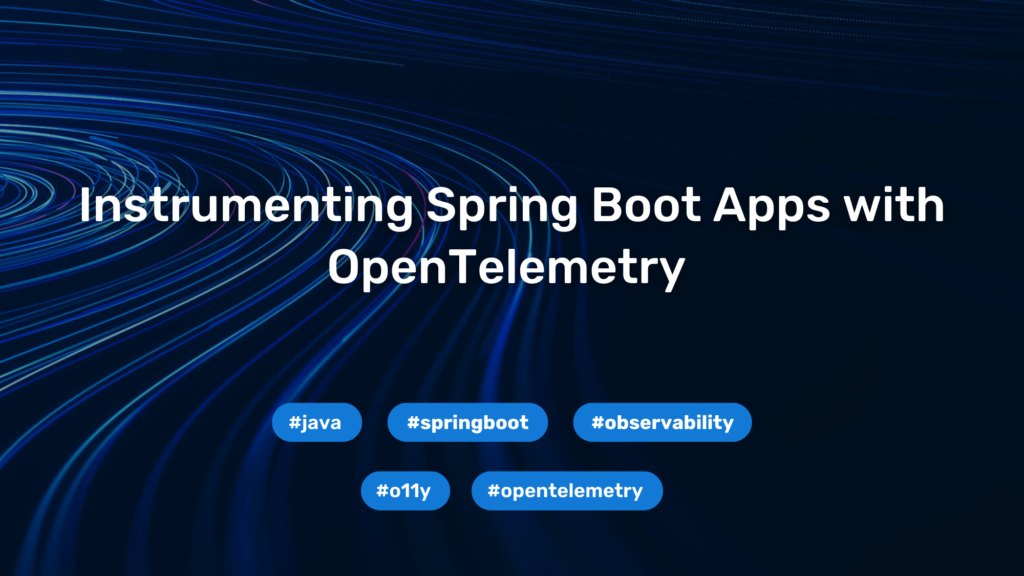RabbitMQ 4.1 Performance Enhancements Explained

Navigating through the ever-evolving landscape of message brokers can feel like trekking through a dense jungle, especially when new versions bring significant changes to your trusted messaging infrastructure. With RabbitMQ 4.1 now available, how do you determine which new features will benefit your event-based systems the most? In this blog post, our aim is to cut through the jungle of new features and determine which enhancements best suit your specific messaging needs.
Just like the villagers in our jungle metaphor who constantly improve their coconut-delivery system down the river, the RabbitMQ team has been busy optimizing their message broker to handle modern challenges more efficiently. We’ll use our compass to navigate through the key improvements in RabbitMQ 4.1, cutting through the complexity to uncover their core advantages. Afterward, we’ll provide a roadmap to guide you through what to expect in the upcoming RabbitMQ 4.2 release. Finally, we’ll summarize our findings to help you navigate these upgrades effectively.
Grab your backpack and get ready to explore what’s new in the RabbitMQ jungle!
Optimized Quorum Queues: Smoother Rivers for Your Coconuts
Remember our river analogy where coconuts flow downstream to deliver messages? In RabbitMQ 4.1, the engineering team has significantly improved the flow dynamics of Quorum Queues – think of it as smoothing the riverbed and optimizing the water flow.
The most notable improvement is the stabilized memory usage. Previously, Quorum Queues could experience fluctuating memory consumption, like a river that sometimes overflows its banks. Now, memory usage remains much more consistent and predictable, allowing for better resource planning in your infrastructure.
Additionally, high-traffic queue relief has been implemented by offloading read operations from memory to individual channel and session processes. This is comparable to having multiple villagers positioned along different points of the river to collect coconuts, rather than having everyone crowd at one location. The result? Significantly higher publication throughput and reduced CPU usage – a win-win for performance-critical applications.
Enhanced WebSocket Performance: Faster Bridge Crossings
In our jungle metaphor, WebSocket connections are like bridges that allow real-time communication across the river. RabbitMQ 4.1 has upgraded to Cowboy 2.13, which substantially improves WebSocket connection speeds. This enhancement is particularly valuable for modern web applications that rely on real-time messaging, ensuring that your coconuts (messages) reach their destination faster than ever.
Automatic TCP Buffer Control: Dynamic River Management
One of the most elegant improvements in RabbitMQ 4.1 is the introduction of automatic TCP buffer control. Think of this as having an intelligent dam system that automatically adjusts water levels based on current conditions. TCP buffers now dynamically adapt to usage patterns, reducing memory requirements, especially when dealing with numerous AMQP connections. This means your messaging infrastructure becomes more resource-efficient without requiring manual tuning.
AMQP 1.0 Enhancements: Smarter Coconut Filtering
The AMQP 1.0 protocol has received significant attention in RabbitMQ 4.1, introducing two major improvements that enhance messaging efficiency:
- Stream Filter Expressions allow clients to receive only relevant messages – like smart villagers collecting only the coconuts they actually need. This reduces network traffic while preserving message ordering, a crucial feature for high-throughput applications where bandwidth efficiency matters.
- WebSocket Support for AMQP 1.0 extends the protocol’s reach to browser-based applications. This creates new “bridges” in our jungle metaphor, enabling direct browser-to-RabbitMQ communication without additional proxy layers.
Management UI and Monitoring Improvements: Better Jungle Maps
Navigating the RabbitMQ jungle becomes easier with enhanced visibility tools. The Management Interface now displays feature flag information, helping administrators understand which features are still migrating – like having detailed maps showing which paths in the jungle are still under construction.
The Prometheus Plugin has been enhanced with histogram metrics for message sizes, providing detailed measurements organized by protocol. This gives operations teams better insights into message patterns, similar to having detailed reports about the types and sizes of coconuts flowing through different parts of the river system.
CLI Tools and Diagnostics: Improved Navigation Equipment
RabbitMQ 4.1 introduces several improvements to administrative tools that make managing your message broker infrastructure more straightforward:
- rabbitmqadmin v2 is now available as a standalone tool using the TOML format – more modern and user-friendly, like upgrading from an old compass to a GPS device.
- New Health Checks help administrators identify issues such as Quorum Queues without leaders – spotting river sections that aren’t functioning properly before problems occur downstream.
- Enhanced diagnostics for deprecated features prepare teams for future upgrades by highlighting components that will need attention – like marking old jungle paths that will soon be closed.
Important Changes to Consider: New Jungle Rules
With every major update comes changes that require attention from development and operations teams.
- Frame Size Adjustments: The pre-authentication frame size has been increased from 4,096 to 8,192 bytes, though the recommended standard remains 131,072 bytes. This is like widening the river entrance to accommodate larger initial coconut batches.
- Client Library Updates: Node.js applications using the amqplib library must upgrade to version 0.10.7 or higher to maintain compatibility.
- MQTT Packet Size: The default maximum MQTT packet size has been reduced from 256 MiB to 16 MiB, encouraging more efficient message design patterns.
- Deprecation Notice: rabbitmqctl force_reset is now deprecated as Khepri will become the standard metadata backend in future versions.
- Support Policy Changes: Jungle Maintenance Updates. From version 4.1 onwards, RabbitMQ no longer provides community support for versions 4.0.x and earlier. Only the 4.1.x series receives public community support, encouraging users to stay current with the latest improvements and security updates.
Looking Ahead: What’s Coming in RabbitMQ 4.2
The jungle of RabbitMQ development continues to evolve. The current 4.2 milestone on GitHub shows development is nearly complete (approximately 94%), indicating an upcoming release is on the horizon.
Khepri as Standard Metadata Backend represents the most significant change coming in RabbitMQ 4.2. Khepri will replace Mnesia as the default metadata storage system, utilizing the Raft protocol for more stable and consistent metadata management, especially during network partition scenarios.
However, this transition requires careful planning, as migration to Khepri is irreversible. Extensive staging and testing will be essential before implementing this change in production environments – like carefully surveying a new jungle path before committing to it as your primary route.
Conclusion: Choosing Your Path Through the RabbitMQ Jungle
After navigating through the jungle of RabbitMQ 4.1 enhancements, several key improvements emerge that can benefit most messaging infrastructures:
- Performance Gains: Optimized Quorum Queues and automatic TCP buffer control provide better resource utilization
- Enhanced Connectivity: Improved WebSocket performance and AMQP 1.0 enhancements expand integration possibilities
- Better Observability: Enhanced management tools and monitoring capabilities improve operational visibility
- Future-Proofing: Preparation for Khepri transition ensures long-term stability
Whether to upgrade should always be tailored to your specific use case and operational requirements. Consider factors such as your current RabbitMQ version, how critical performance improvements are for your workload, and whether your team has the capacity to handle the migration process.
Other factors to consider when deciding to upgrade include whether your operations team is familiar with the new features and whether additional training will be required. I hope this blog post has provided a clear overview of the improvements in RabbitMQ 4.1 and helped you to make an informed decision as you navigate the evolving message broker landscape.
You need to load content from reCAPTCHA to submit the form. Please note that doing so will share data with third-party providers.
More Information




